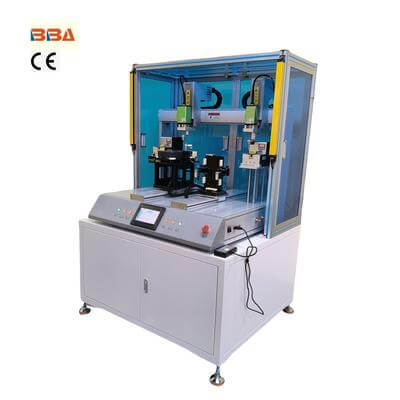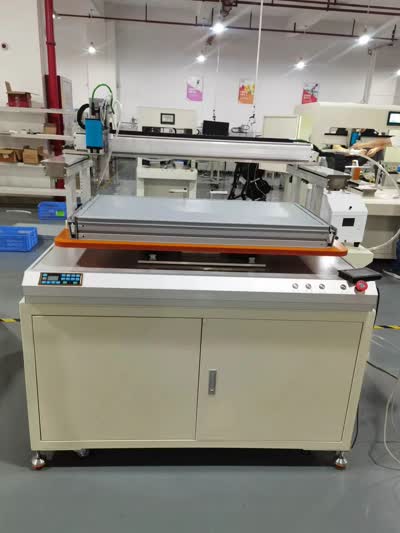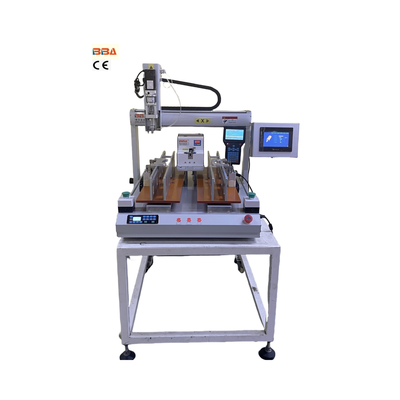Automatic Screw Locking Machines for Electronics Assembly | Precision & Efficiency
| Product Name | Applicable industries |
| Automatic Screw Feeder | Medical Device Manufacturing |
Applications of Automatic Screw Locking Machines in Electronics Assembly
The electronics manufacturing industry is characterized by its relentless pursuit of precision, speed, and reliability. In this high-stakes environment, the assembly process is a critical stage where quality is either built-in or compromised. One of the most fundamental yet vital operations in this process is screw fastening. Traditionally a manual and tedious task, it has been revolutionized by the adoption of automatic screw locking machines. These sophisticated systems have become indispensable in modern electronics production lines, offering unparalleled advantages that directly impact the bottom line and product integrity.
Enhancing Precision and Product Quality
Manual screwdriving is inherently prone to human error. Variations in torque, angle, and sequence can lead to a host of quality issues, including stripped threads, cross-threading, and under or over-torquing. These defects can cause immediate failures or lead to long-term reliability problems in the field. Automatic screw locking machines are engineered to eliminate this variability. They are programmed to deliver each screw with exact, predetermined torque and a precise angle of rotation. This consistent application ensures that every screw is fastened to its optimal specification, significantly reducing the risk of assembly-related defects and enhancing the overall durability and performance of the final electronic product.
Dramatically Increasing Production Efficiency
Speed is a crucial competitive factor in electronics assembly. Automatic screw feeding and driving systems operate at a pace no human operator can match. They can place and tighten multiple screws per minute with unwavering accuracy, drastically reducing cycle times per unit. Furthermore, these machines can operate continuously without fatigue, enabling 24/7 production schedules. This massive boost in throughput allows manufacturers to meet high-volume orders and shorten time-to-market for new products, providing a significant strategic advantage.
Reducing Operational Costs and Labor Challenges
While the initial investment in automation is notable, the long-term return on investment is compelling. By automating the screw fastening process, companies can alleviate the strain of repetitive strain injuries (RSIs) associated with manual screwdriving, leading to a safer work environment and lower healthcare costs. Additionally, these machines free up valuable human labor from monotonous tasks, allowing skilled technicians to be redeployed to more complex, value-added activities such as quality control, machine supervision, and process optimization. This not only improves job satisfaction but also maximizes the utilization of human capital.
Unmatched Flexibility and Adaptability
Modern electronics products are diverse and frequently updated. A key strength of contemporary automatic screw locking systems is their flexibility. They can be quickly reprogrammed and reconfigured to handle different screw types, sizes, and patterns. With easy-to-use software interfaces, switching from one product assembly recipe to another can be accomplished in minutes. This agility is essential for assembly lines that produce a wide variety of devices, from smartphones and laptops to smart home gadgets and wearable technology, allowing for efficient mixed-model production without costly downtime.
Integration with Smart Manufacturing Systems
The latest generation of automatic screw locking machines goes beyond mere mechanization. They are intelligent systems equipped with sensors and connectivity features. They can provide real-time data on production counts, torque values, and error rates. This data can be integrated into a central Manufacturing Execution System (MES) for comprehensive monitoring and analysis. If a torque value deviates from the set parameters, the machine can automatically flag the unit for inspection or halt the process, preventing a batch of defective products from moving down the line. This capability is a cornerstone of Industry 4.0, enabling predictive maintenance, traceability, and continuous process improvement.
In conclusion, the application of automatic screw locking machines is a transformative step in electronics assembly. They are no longer just a convenience but a necessity for any manufacturer serious about quality, efficiency, and cost-effectiveness. By ensuring precision, boosting speed, lowering costs, and providing valuable data, these automated solutions are building a stronger foundation for the future of electronics manufacturing.



